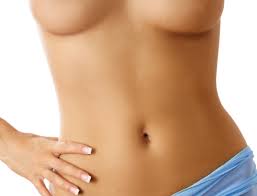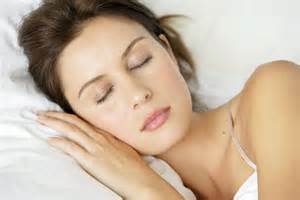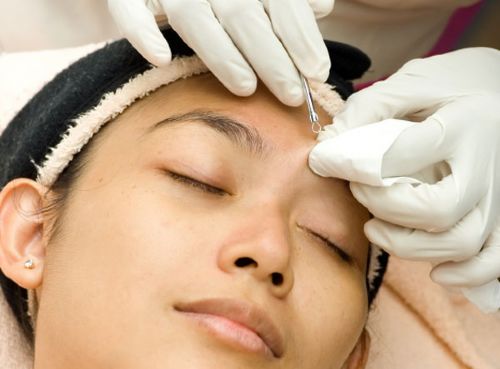By Sandra Tyler
19 Apr, 2015
Botox, Breast Augmentation, Butt Augmentation, Comfort Anesthesia, Cosmetic Getaways, Ear Surgery, Esthetician, extractions, Face Lift, facial, facial rejuvenation, facials, Featured Procedures, Fillers, hair removal, Juevederm, Labiaplasty, Laser, liposuction, Male Surgery, Misc, News & Blogs, Rhinoplasty, skin care, spa, Special Offers, Tummy Tuck
breast augmentation, facelift, lifestyle lift, lifstyle, liposuction, mommy makeover, tummy tuck
The 2014 plastic-surgery statistics will be released later today by the American Society for Aesthetic Plastic Surgery (ASAPS). Thanks to an advance peek, I can report that butts are getting bigger, while breasts are getting smaller.
Buttock augmentations are up 86 percent over 2013. Michael C. Edwards, a plastic surgeon and the president of the ASAPS notes that most women don’t want giant backsides, they just want more shapely ones. The other big news is breast revisions, which are up 30.4 percent. Many attribute that rise to aging implants in need of replacement, along with many women’s desire to switch from saline to silicone-gel-filled implants, which may not have been available when they originally had surgery. What’s more, insiders say most of these women are exchanging their old implants for smaller replacements.
The other news in the numbers is a five percent drop in overall procedures: 10,663,607 in 2014, down from 11,419,610 in 2013. The decrease was mostly in minimally-invasive procedures like Botox and fillers. No explanation for this was offered by the ASAPS, but could it be what I call injection fatigue? Many women I’ve spoken to don’t want to return again and again for refills. Surgical procedures fell only 1.5 percent from 1,883,048 to 1,764,956, a drop that the number crunchers say is not statistically significant.
Fat—and getting rid of it—is still a high priority. In recent years the top surgical procedures for women have flipped back and forth between breast implants and liposuction. In 2014, liposuction held the number one spot, followed by breast augmentation (down 8.5 percent), tummy tuck, blepharoplasty (or eye lift), and in fifth place, the breast lift. Facelifts are in eighth place.
Liposuction may still be king (or is it queen?) in the surgical department, but non-surgical fat reduction with devices such as CoolSculpting and VASERshape rose a whopping 42.7 percent, from 94,922 in 2013 to 135,448 in 2014. That number could rise even more this year if ATX-101, an injection for fat reduction under the chin, gets FDA clearance, which it’s expected to receive.
More
By Sandra Tyler
16 Mar, 2015
Esthetician, extractions, facial, facial rejuvenation, skin care
beauty sleep, Cosmetic Surgery, dark circles, facial, plastic surgery, skin care, skin repair, skin restoration
There are numerous myths about beauty and skin care that keep popping up no matter how wrong they are, yet every once in a while a beauty myth turns out to be true. Such is the case with beauty sleep. It’s a real thing, and you definitely need to be getting enough of it.
It could be you didn’t need to read what I wrote above in order to know that beauty sleep is a real thing. You know it just from looking in the mirror after not getting enough sleep. Lack of sleep causes dark under-eye circles, your skin looks less than great, and your fine lines or wrinkles appear more pronounced. In the WebMD article Are You Getting Enough Beauty Sleep? dermatologists had the following to say about beauty sleep:
“Lack of sleep causes blood vessels to dilate, causing the look of dark circles,” says dermatologist Sonia Badreshia-Bansal, MD, of the University of California, San Francisco. Sleepily rubbing your eyes doesn’t help those dark rings.
Not enough sleep can also make you more stressed, and everyone can see that tension. “It makes you look angry, tired, sad, and certainly older,” says New York City dermatologist Doris Day, MD.
What exactly is happening to your skin when you do not get enough sleep? Dr. Ellen Marmur explains in her excellent book Simple Skin Beauty: Simply put, if you sleep too little, you’re not giving your body time to repair itself. The nervous system has two states that are in balance. The sympathetic system, which is more in control while we’re awake, keeps the blood flow near the core of the body. While we sleep, the parasympathetic nervous system runs the show and blood flow shifts to the skin. Additionally, skin isn’t under attack from the sun and the elements at night. This relaxed parasympathetic state allows greater circulation and oxygen flow to the skin, or peripheral vasodilation in medical terms. This is when the skin gets a lot of internal attention and repair mechanisms go into action, much like the night workmen at Disneyland who fix and restore the rides and clean the place up before the part opens the next day. Receptors spring to life within the blood vessels and grab amino acid molecules (the building blocks) to help build more collagen, and fluid and toxins are drained.
Without enough rest, the skin doesn’t get this repair and restoration, and all that important activity isn’t being done. One example: when excess fluid near the skin isn’t transported to the bladder to be excreted, the result is puffiness. … It shows up most around the eyes because there’s less fat in that area, so water retention is more apparent.
After all this bad news luckily there is a bit of good news when it comes to sleep and your skin. According to Dr. Day our skin recovers quickly once you are able to get a good night’s rest. So just because you missed out on getting enough sleep a few nights in a row doesn’t mean that you’ve damaged your skin for good. And just how much sleep do you need? That varies from individual to individual. Some people do fine with only 7 hours of uninterrupted sleep while others need 8 or 9 hours. That is something that you have to determine for yourself.
In order to make sure you get your much needed shut-eye create a soothing bedtime routine. Stop drinking caffeinated drinks in the afternoon, keep to a set sleep schedule as much as possible, and make your bedroom a sleep sanctuary. Your skin will thank you for it.
More
Look For The Gloves.
The esthetician should always wear gloves when performing extractions. The esthetician is dealing with body fluids, and if she doesn’t wear gloves, it means she’s not that clean or careful in her work.
Fingers Or Extraction Tool?
Estheticians can remove blackheads with their index fingers, covered in cotton, by applying pressure to either side of the blackhead and gently coaxing it from the follicle. Some estheticians prefer to use a stainless steel tool that has a loop at one end. It’s faster and can get into awkward places, but some clients find it hurts more.
Whiteheads Are Harder To Remove.
Whiteheads have a layer of dead skin cells that have grown over the plug of sebum. The esthetician has to make an opening in the skin with a lancet, a small, sharp, surgical blade that comes in a sterile packet. These are harder to remove and take more time. The use of lancets is illegal in some states, and some resort and hotel spas don’t allow their estheticians to use them.
Extractions Can Hurt.
Different people have different pain thresholds. People with thicker, oiler skin are usually less sensitive, while people with thinner skin are usually more sensitive. Estheticians also vary in how aggressive they are. Speak up if it hurts too much.
Extractions Can Cause Damage If Not Done Correctly.
Too much pressure can cause broken capillaries on people with sensitive, reddened skin (called couperouse). It can cause dark spots called hyperpigmentation on people with black skin. And inflamed areas should not be extracted, because the infection might spread.
Don’t Have An Extraction Marathon.
Extractions shouldn’t last more than ten minutes. If you have a lot of blackheads and whiteheads, don’t expect to get rid of them in one session. Too many extractions at one time can be traumatic to the skin.
Extractions Are Important!
If you have acne or blemishes, extractions are the most important part of the facial for you. Once the follicles are cleared out, your skin should start to improve. You may want to get facials every two weeks until your skin is clear. It’s also important to follow up with the right products and a good home skin care routine.
More



